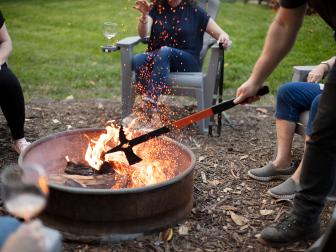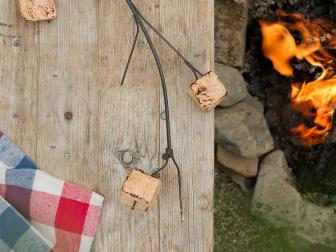Fire Pit Maintenance Tips
Fire pits can be expensive, so protect your investment and make the most of your fire pit by keeping it in top working order. Basic fire pit maintenance isn’t difficult, and it’s key to fire pit safety.

A fire pit takes your outdoor living space to the next level, giving it a focal point that’s elegant and cozy. Whether you buy one or build it yourself, a fire pit is great for outdoor entertaining or a simple evening at home any time of the year. The secret to keeping your fire pit looking and functioning well is maintenance. Caring for a fire pit isn’t hard. Just tend to the basics, and you’ll help your fire pit last.
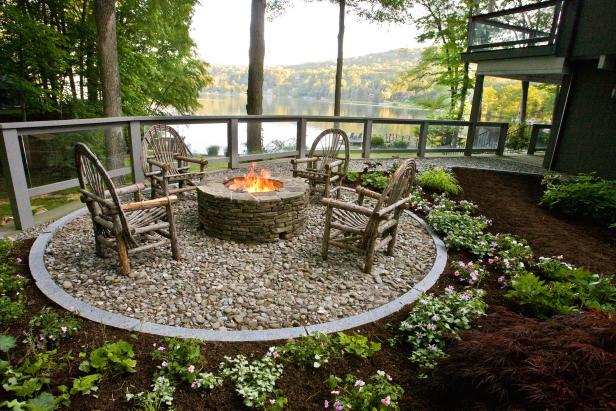
Image courtesy of Shayne Newman
A nonflammable base like this gravel boosts fire pit safety and makes maintaining your fire pit easier.
The Best Location for a Fire Pit
Finding the right spot for your fire pit drastically impacts the ease of maintenance. Choose a site with some wind protection to avoid smoke problems or scattered ash. Prune nearby trees with potential overhang and keep them trimmed regularly to help with fire pit safety. Creating a nonflammable buffer zone at least 10 feet in diameter is a basic fire pit safety rule.
A fireproof surface such as concrete pavers, flagstone or a fire pit mat can protect a patio or deck from the heat. It’s best to cover grass, too, because the first fire will dry it out. Use crushed rock, gravel or sand for a low-cost approach, or consider creating a fire pit patio with flagstone or pavers.
What Type of Wood Should You Burn?
Wood-burning fire pits are fairly forgiving, but burning trash or pressure-treated wood can release harmful toxins that are unhealthy to breathe and may damage fire pit surfaces. Mature, dry split wood is the ideal fuel because it creates less buildup over time. Use leaves and sticks from your yard as kindling, and skip any accelerants, which can damage the fire pit.
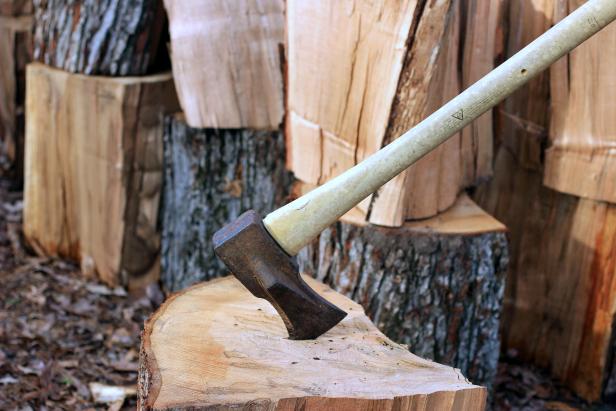
Photo by Mick Telkamp
It is best to use seasoned firewood in a fire pit because the moisture has been evaporated out of the wood.
Use the Right Fire Pit Tools
Simple tools make caring for your fire pit even easier. A basic fireplace toolkit provides all you need: an ash scoop, long poker and tongs for moving logs around. Look online for specialized fire pit tools, which typically feature longer, stay-cool handles, so you can safely tend to your fire without getting too close. A metal bucket with a lid is the right container for ashes. A cover is important to help keep ashes dry until you dispose of them.
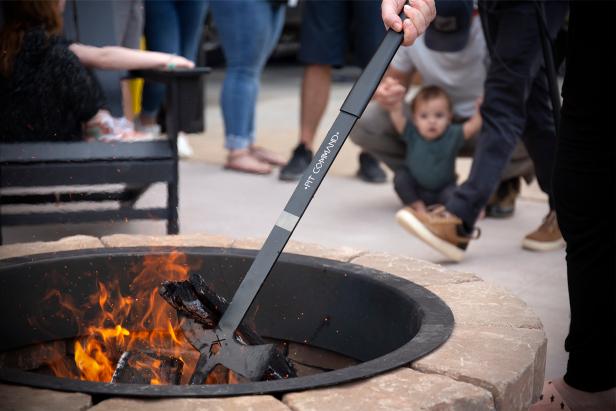
PitCommand.com
Using the right tools helps keep your fire pit in good form. A long-handled poker lets you move logs easily to help ensure even burning.
Putting Out the Fire
It’s best to let a fire burn itself out. Stop adding logs to a wood-burning fire an hour or so before you plan to head indoors. If you used a commercial fire log or fire starter, shift it to the edge of the fire pit, away from the main fire. Smother it in ash to stop it from burning. Spread remaining logs apart to speed up burning, and let the fire burn itself out.
A snuffer or fire pit cover fits snugly and eliminates oxygen for the fire. Fire pit manufacturers often sell snuffers, or you can buy one to fit your existing fire pit. You can also smother a fire with dirt or sand, or douse it with water, although it’s best to avoid pouring water into a metal fire pit because the temperature change can stress the metal. Definitely don’t use water to extinguish a natural gas or propane fire pit or you risk cracking ceramic parts.
10 Essential Outdoor Fire Pit Safety Rules
Keep your family safe by knowing the safety rules for gas or wood-burning outdoor fires. Plus, learn about the best fire pit tools, tips for having a fire pit on a deck or under a pergola, and what type of wood to burn in a fire pit.
Cleaning Out the Ashes Is Important
Ashes are acidic and can corrode metal. Wet ash turns into lye, which can also damage metal. Try to remove dry ashes in a metal fire pit within a few days of having a fire. Use an ash shovel, scoop or trowel to remove the ashes, placing them into a metal ash pail or bucket. Be careful, because ashes can retain heat. Some fire pit bowls have an ash drawer, which makes ash cleanup easy.
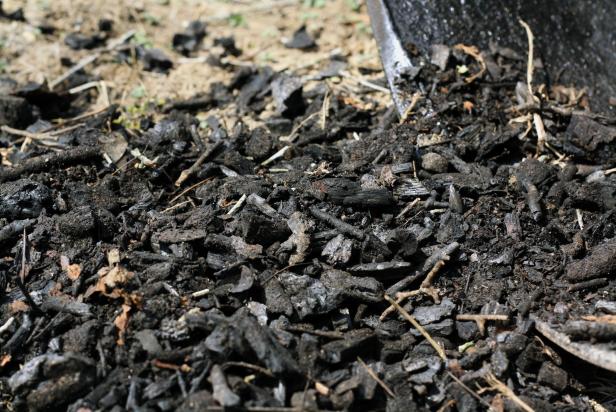
Photo by Mick Telkamp
Ash can cause metal to corrode, so it is important to remove it from your fire pit.
Cover the Fire Pit
Rust is the big enemy of a metal fire pit. Cover your fire pit when it’s not in use to keep it dry. Some fire pits come with a cover that protects from the elements. You can find fire pit companies online that offer custom fire pit covers. A fire pit cover should fit well and be able to handle your local weather.

A fire pit cover protects the inside of your fire pit from the elements. It should be tight-fitting to exclude moisture.
Essential Maintenance for Each Type of Fire Pits
Masonry
When installing a masonry fire pit in cold regions, be sure to extend footers to the frost line or build on a reinforced concrete base to reduce cracking risk. Temperature differentials — a hot fire raging in cold conditions — make cracking commonplace. Some cracks are only cosmetic, while others aren’t. The best practice is to have all cracks evaluated and patch severe ones prior to lighting a fire.
The other issue with a masonry fire pit is residue buildup over time. To remove residue, scrub the fire pit with a solution of one part muriatic acid to nine parts water, followed by a water rinse and 48 to 72 hours of drying prior to use.
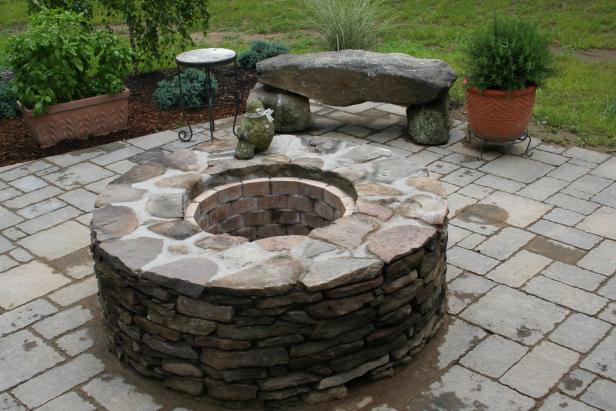
Image courtesy of Shayne Newman
Check masonry fire pits for cracks, which can usually be repaired, and residue buildup, which can be cleaned.
Gas
A propane or natural gas-fueled fire pit is a good choice for existing patios, thanks to the fact that they’re safe, easy to use and low maintenance. They typically produce less heat than a wood-burning fire pit, but also yield no messy ashes. Keep burners clean for proper gas flow, and check the fuel line regularly. A gas fire pit is instant on and off, all with the flip of a switch. When you turn off the flame in a gas fire pit, also turn off the gas at the line.
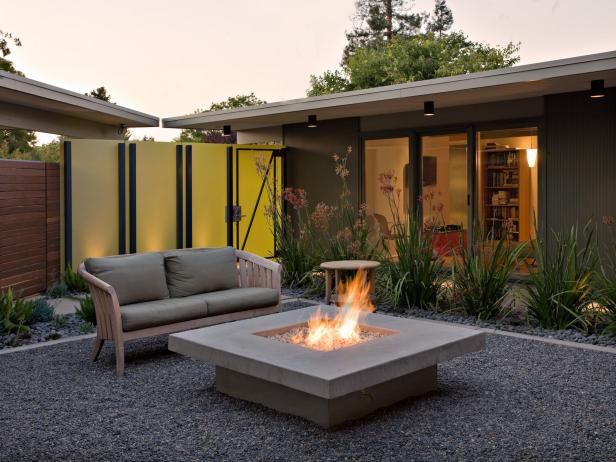
Jason Liske
It is important to inspect the gas line on a fuel-burning fire pit to make sure there are no holes, kinks or dirt in the line.
Metal
Rust is a common issue with metal fire pits. You can easily remove surface rust with a stiff wire brush. Some manufacturers suggest using protective coatings like oil or silicone to minimize rust development. Follow instructions exactly in terms of what type of surface treatment to use because different metals require specific materials. Some manufacturers recommend letting a fire pit develop a rusty patina.
Inspect a metal fire pit before each use, looking for thin spots or rust, which may create a hole that lets hot ash escape. If you typically flood your fire pit with water to douse the flames, you may cause cracks. Patch cracks with high-temperature fillers. With metal fire pits, thicker metal (higher gauge) versions last longer than thinner types.
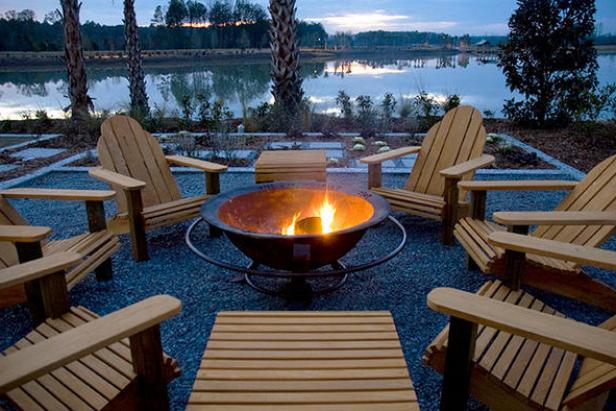
The greatest issue with a metal fire pit is rust. Having a tight-fitting fire pit cover can help prevent some rust buildup by eliminating moisture in the pit when it's not in use.
Maintenance for Fire Pit Add-Ons
Spark Screen
Many prefab fire pits include flat or domed screens that reduce ember spread for safety. Screens also help decrease char. Don’t spray any accelerant (lighter fluid, gas or other flammable chemicals) on a spark screen; it will deteriorate the metal.
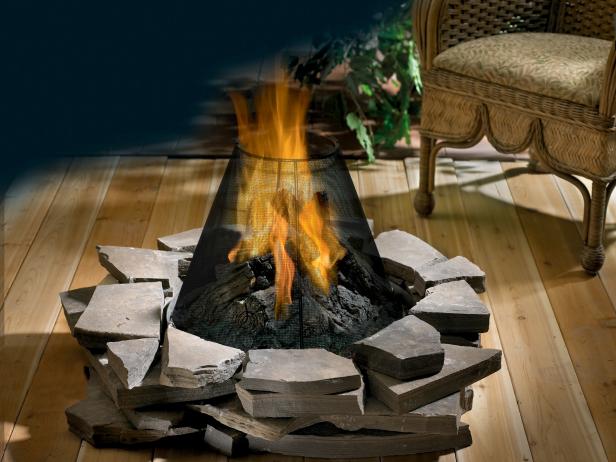
Woodland Direct
Fire pits need safety screens, and more so if your pit is on a deck.
Cooking Grates
If you use your fire pit to cook outdoors, clean grates or other cooking surfaces promptly. Grease, juices and food residue can build up on the inside of the fire pit, causing stains and exacerbating deterioration. Store cooking grates out of the elements to make them last and avoid rust. Don’t cook on gas fire pits unless they’re specifically designed for that purpose.
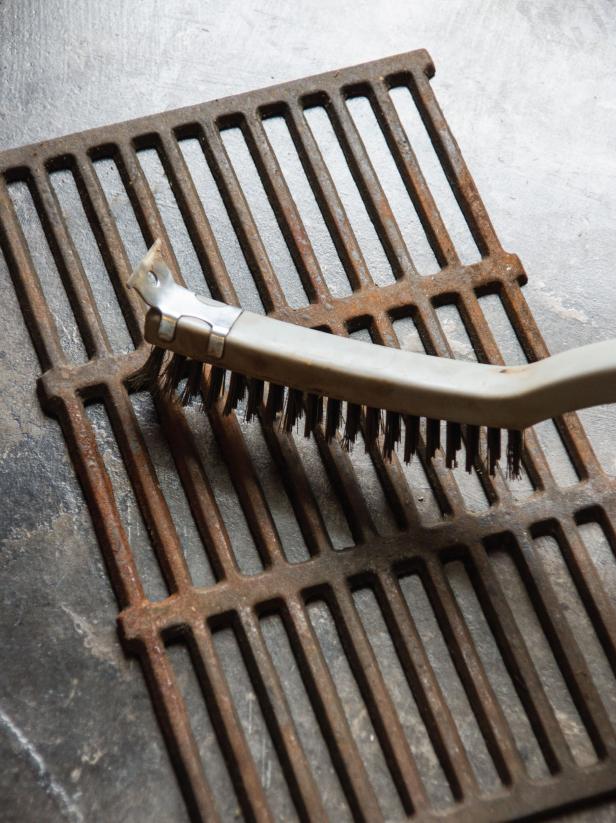
Photo by Sam Henderson
With a stiff wire brush and steel wool, remove any rust and buildup from the grates. Wash in warm soapy water and dry completely. Coat the grates with a thin layer of cooking oil.
Fire Pit Storage
A permanent fire pit usually handles year-round weather conditions with minimal maintenance. For a portable fire pit, store it under cover in a garage or shed during extended periods when it’s not in use. Doing this makes cleaning any accumulated off-season dirt and debris a breeze.






